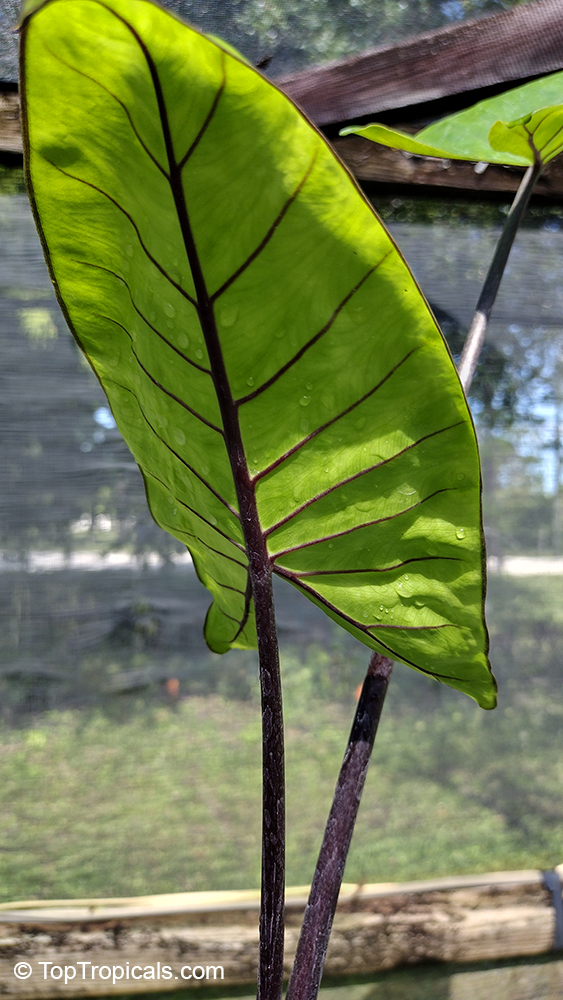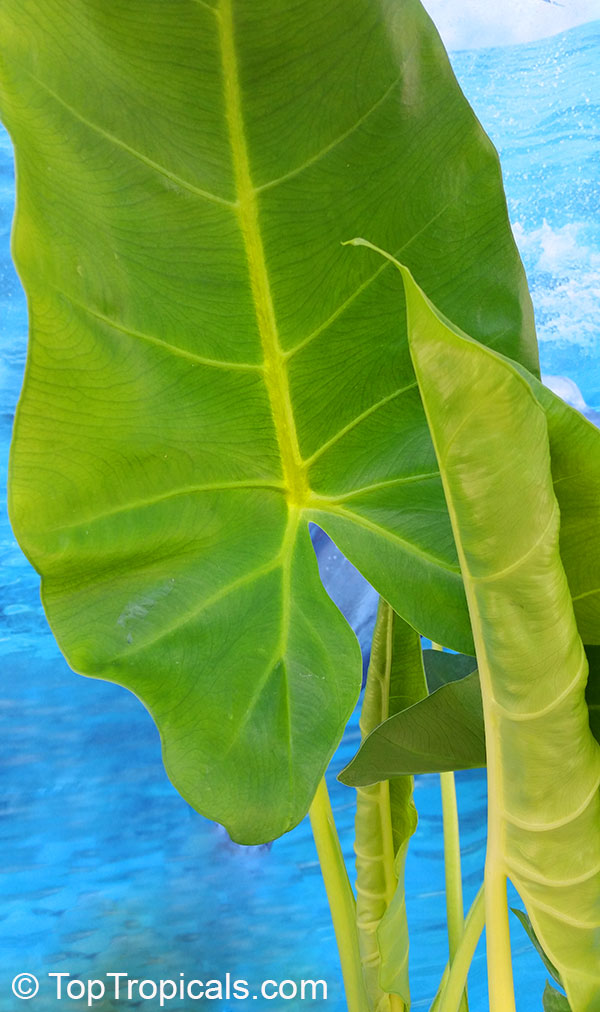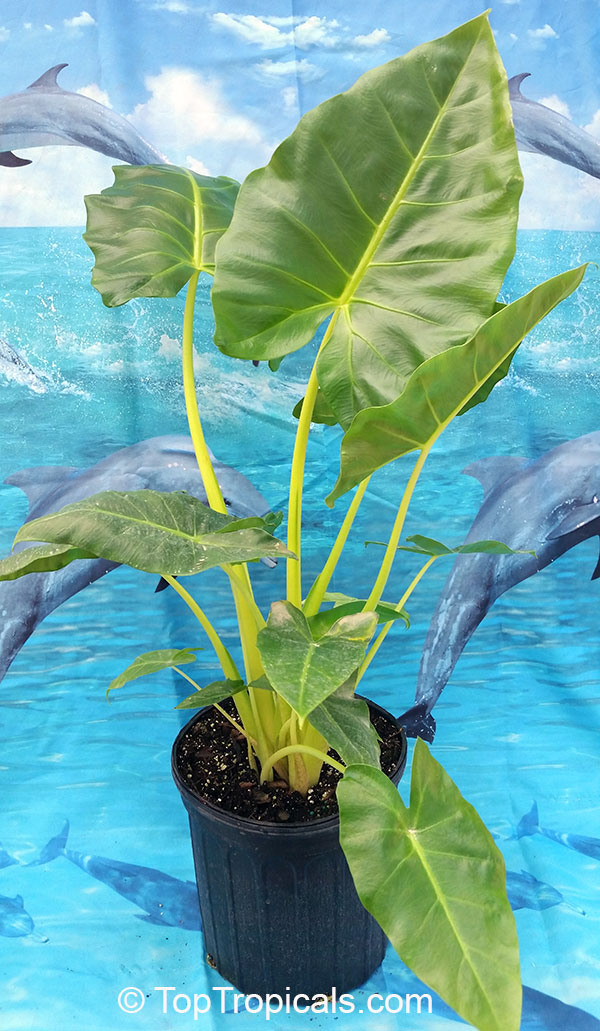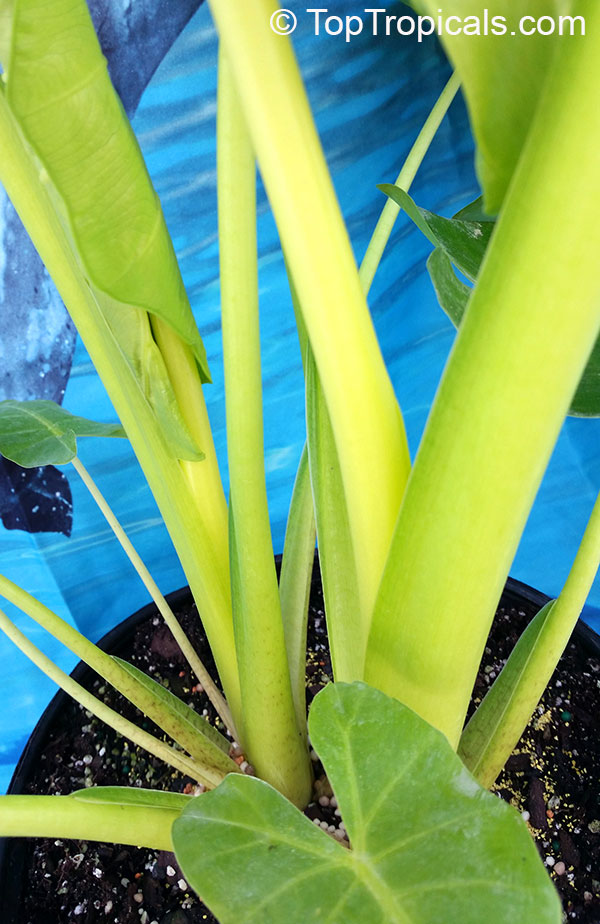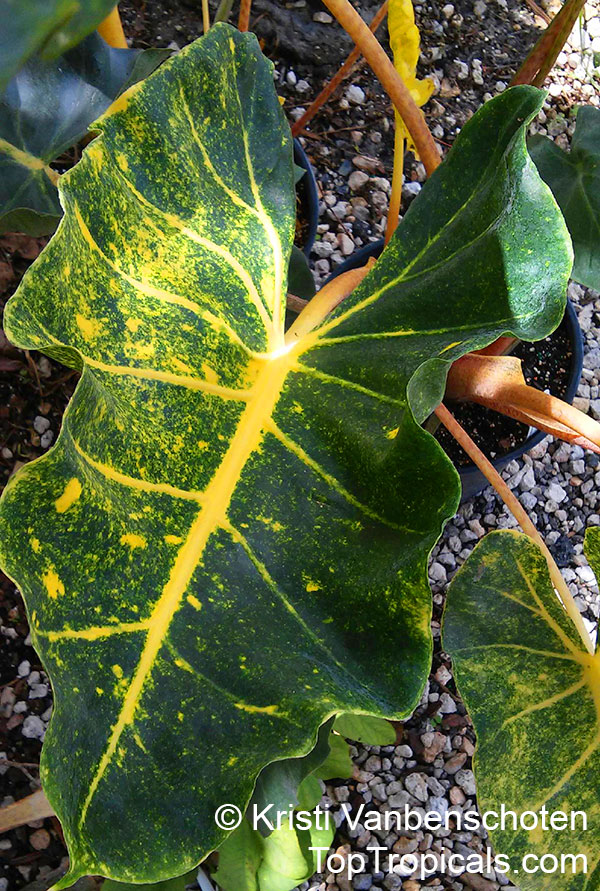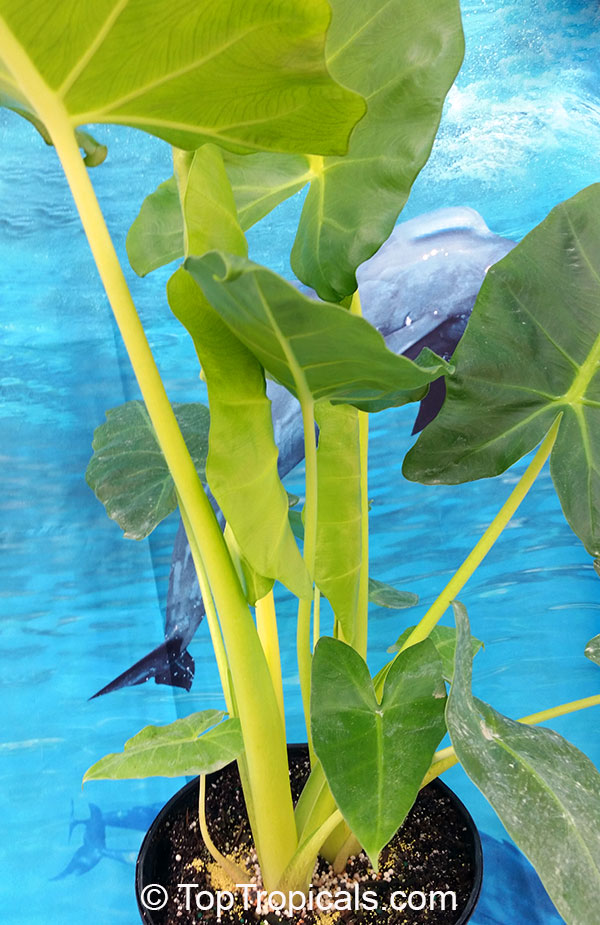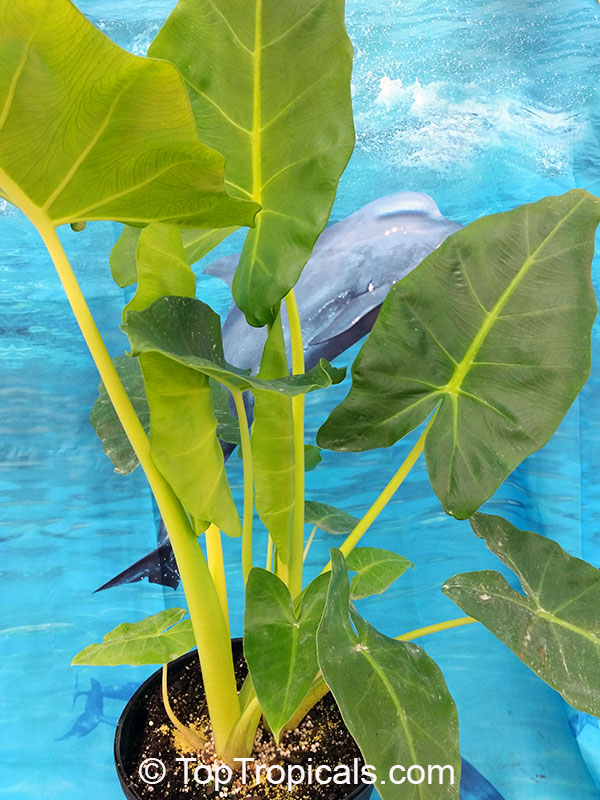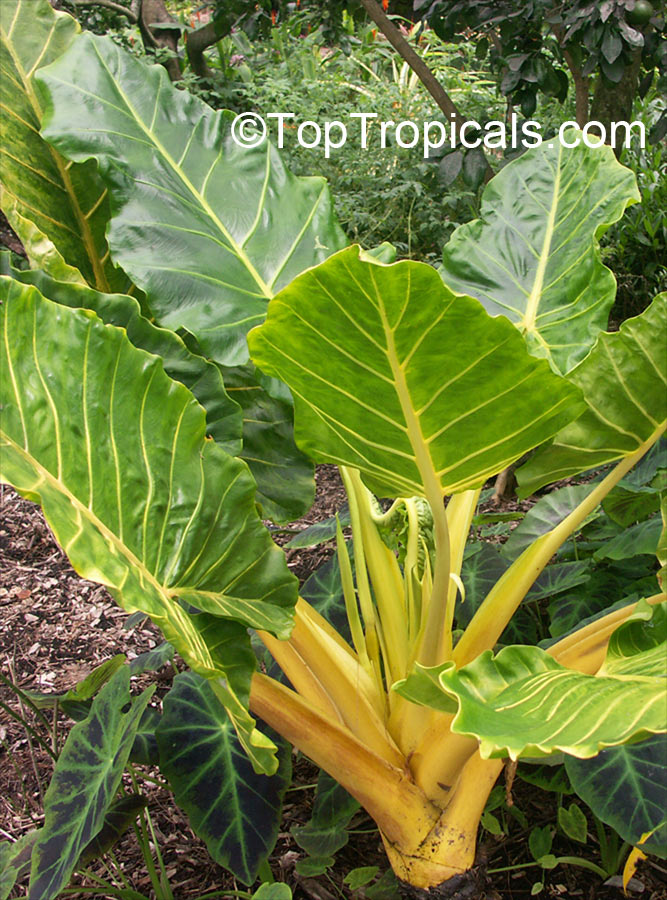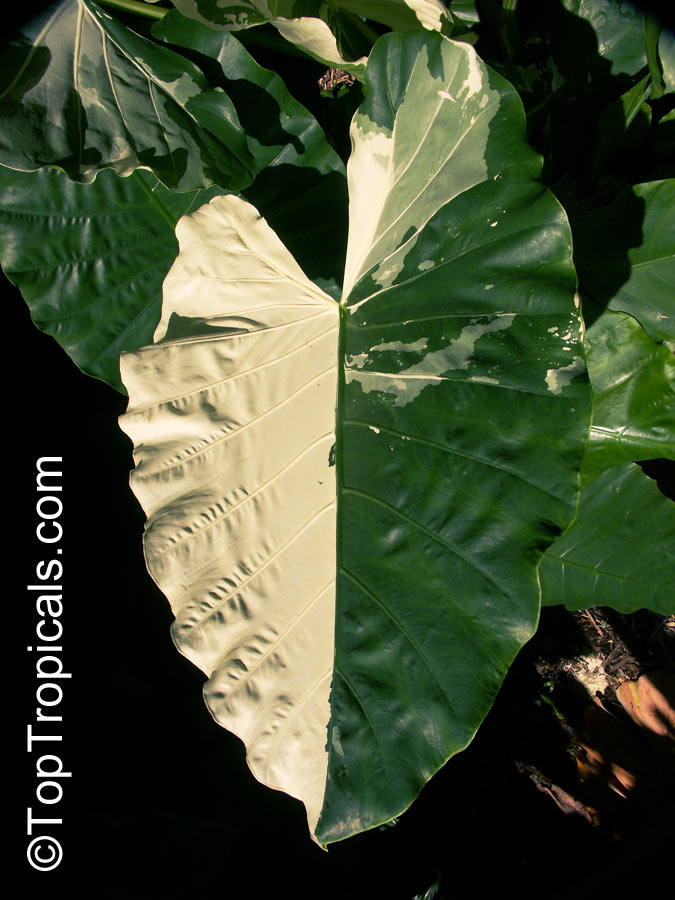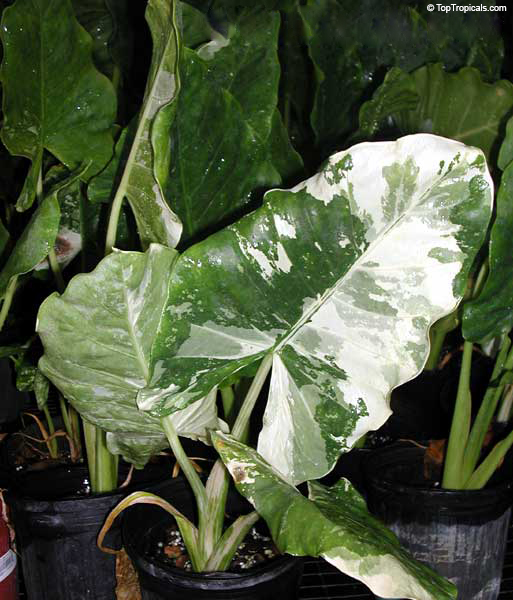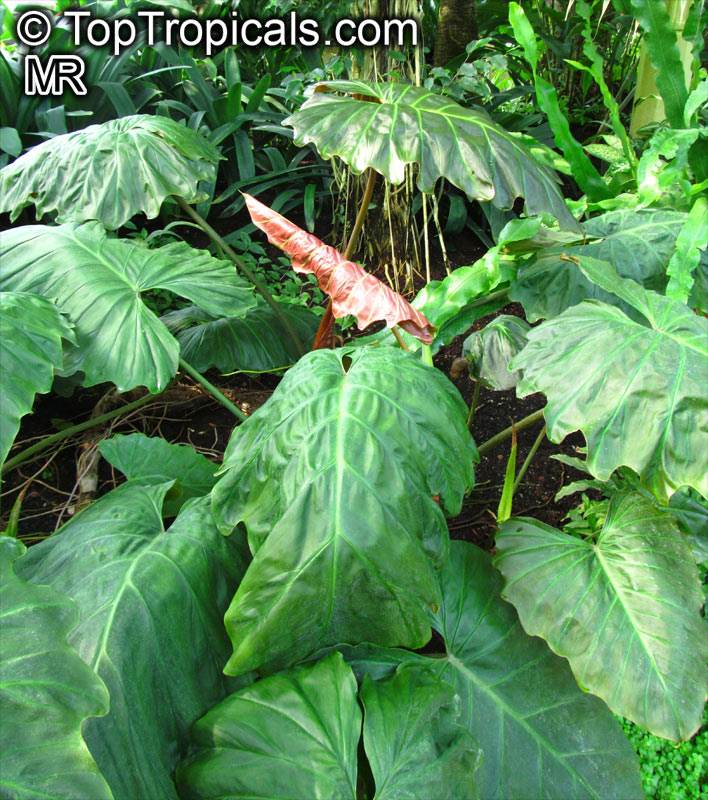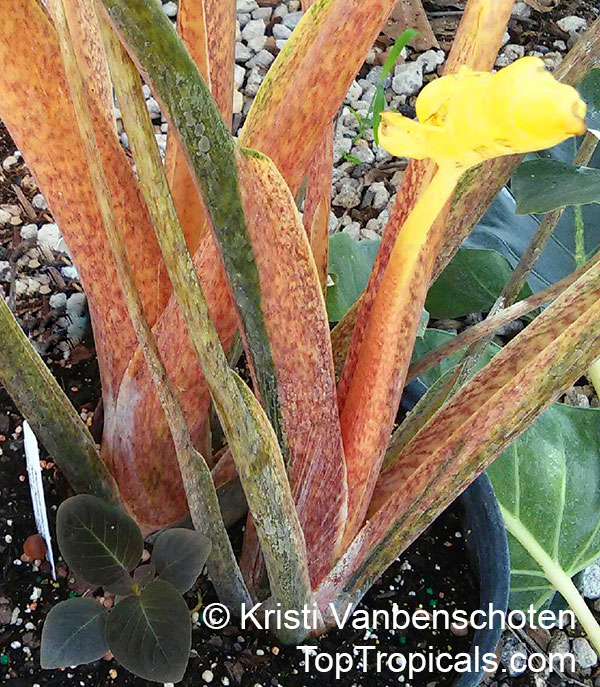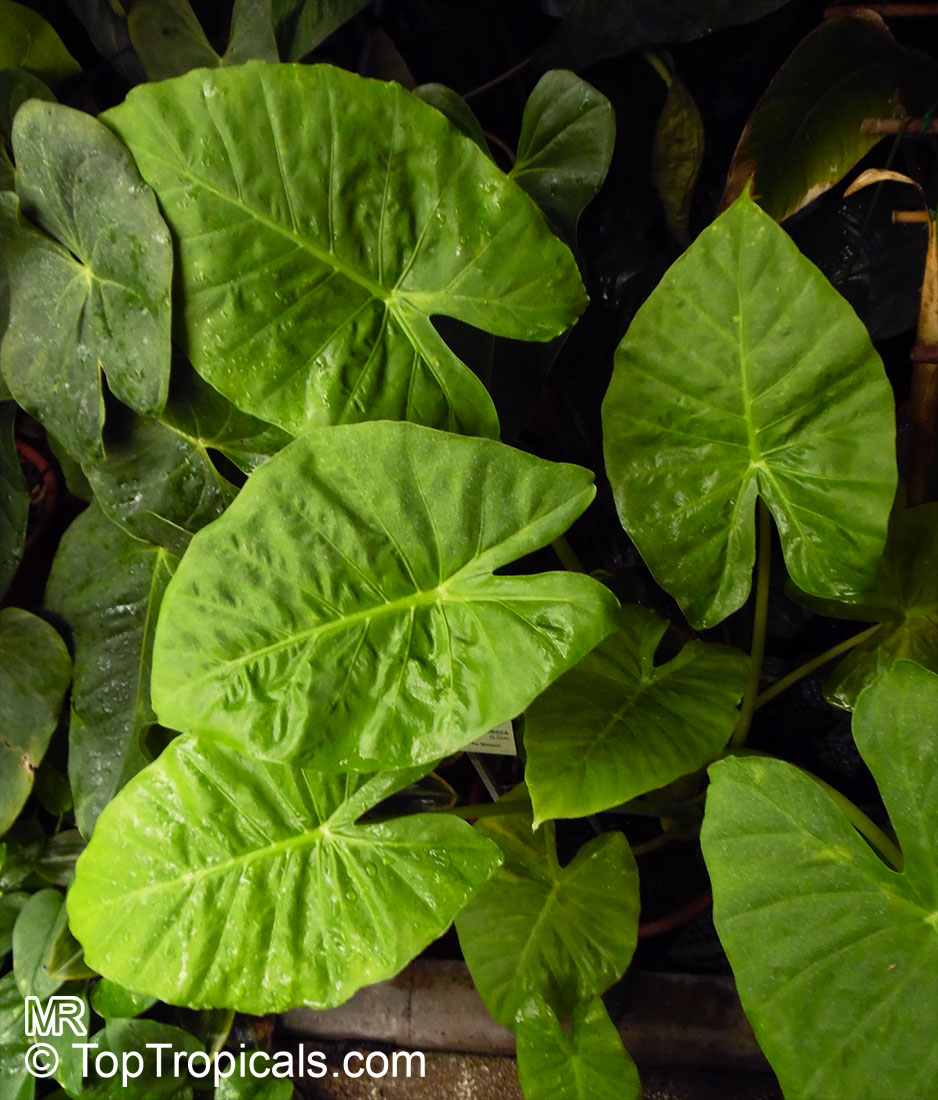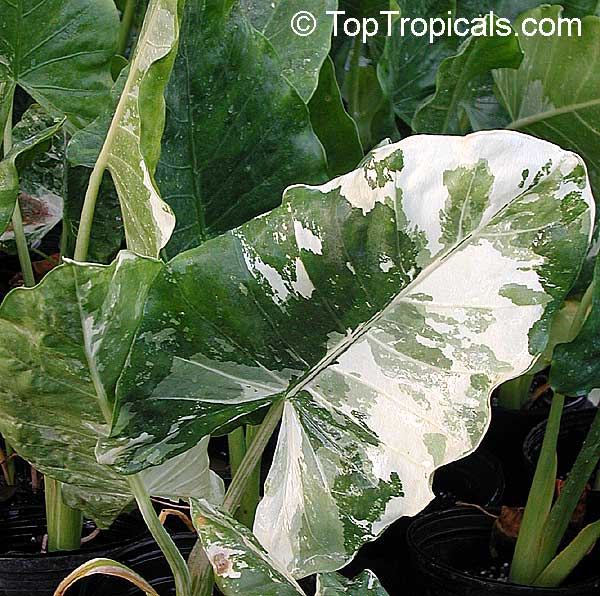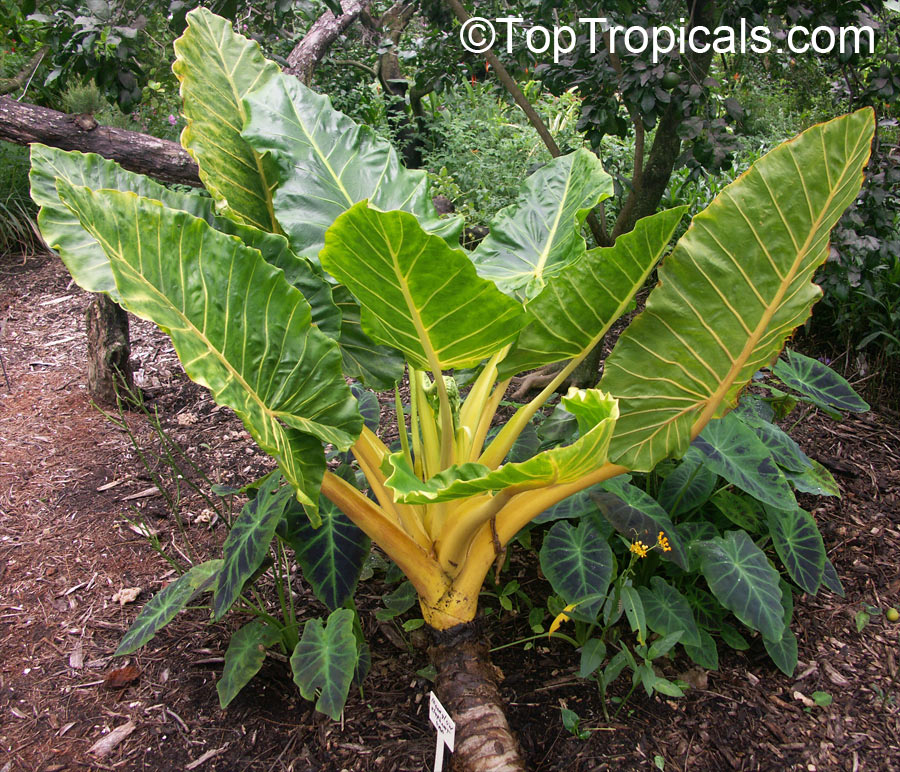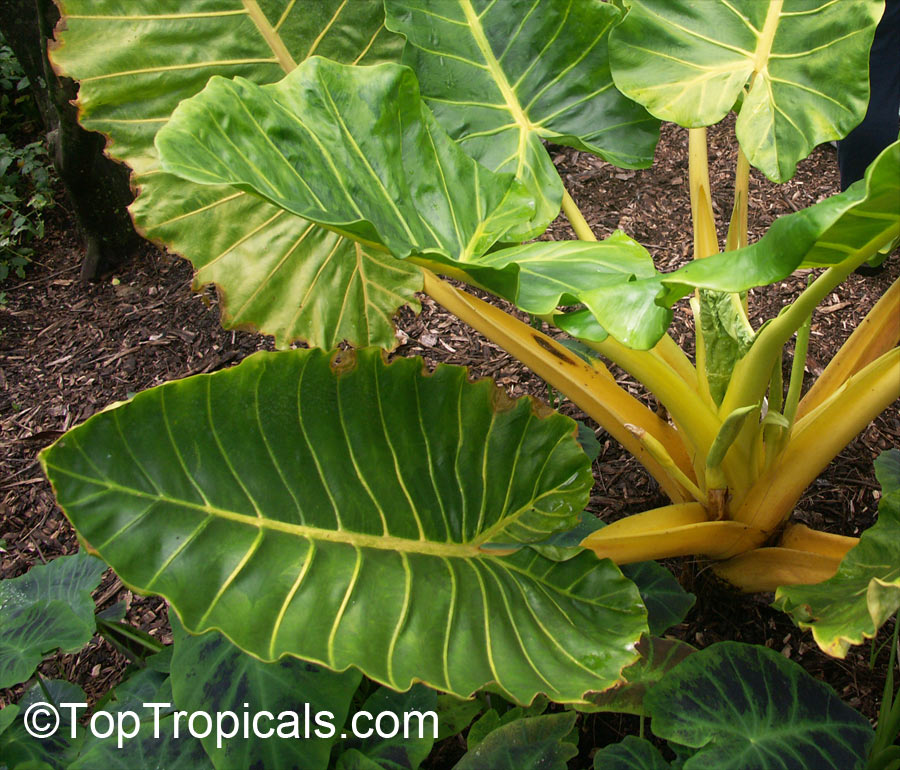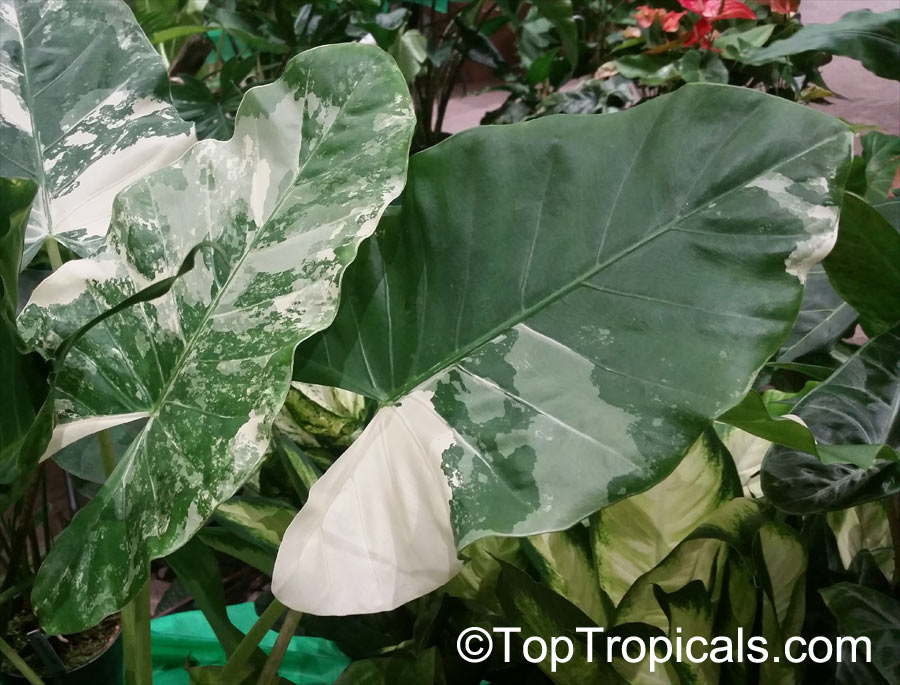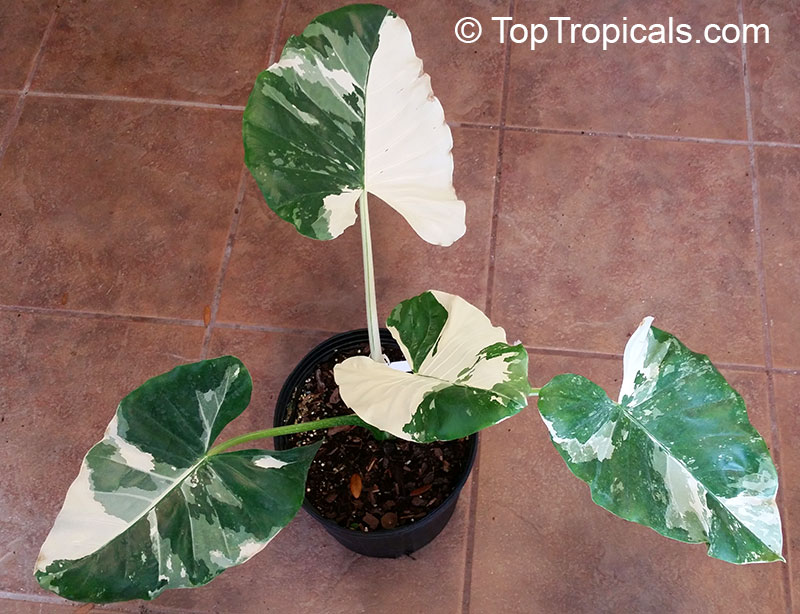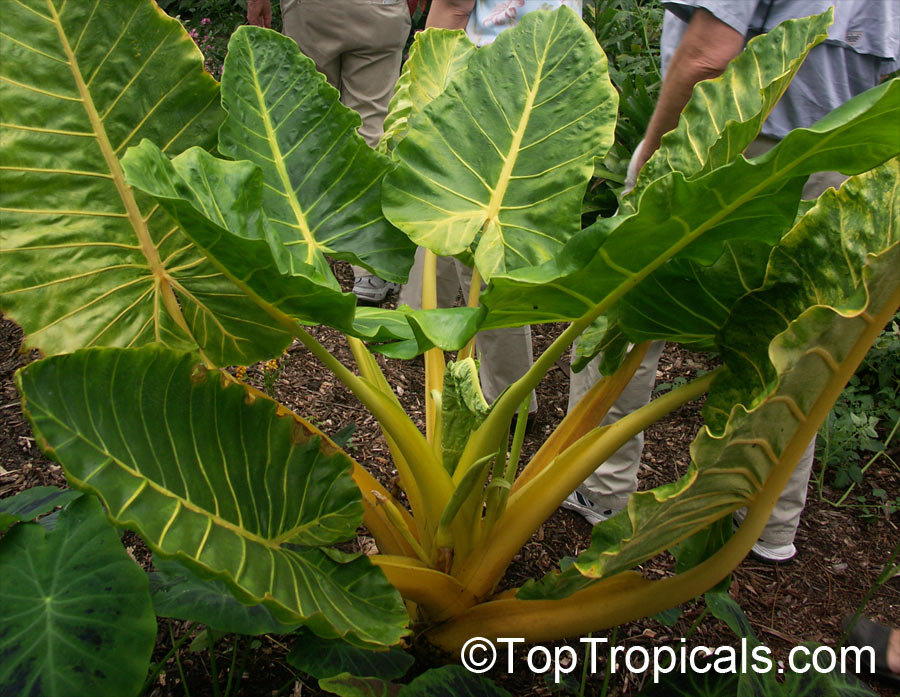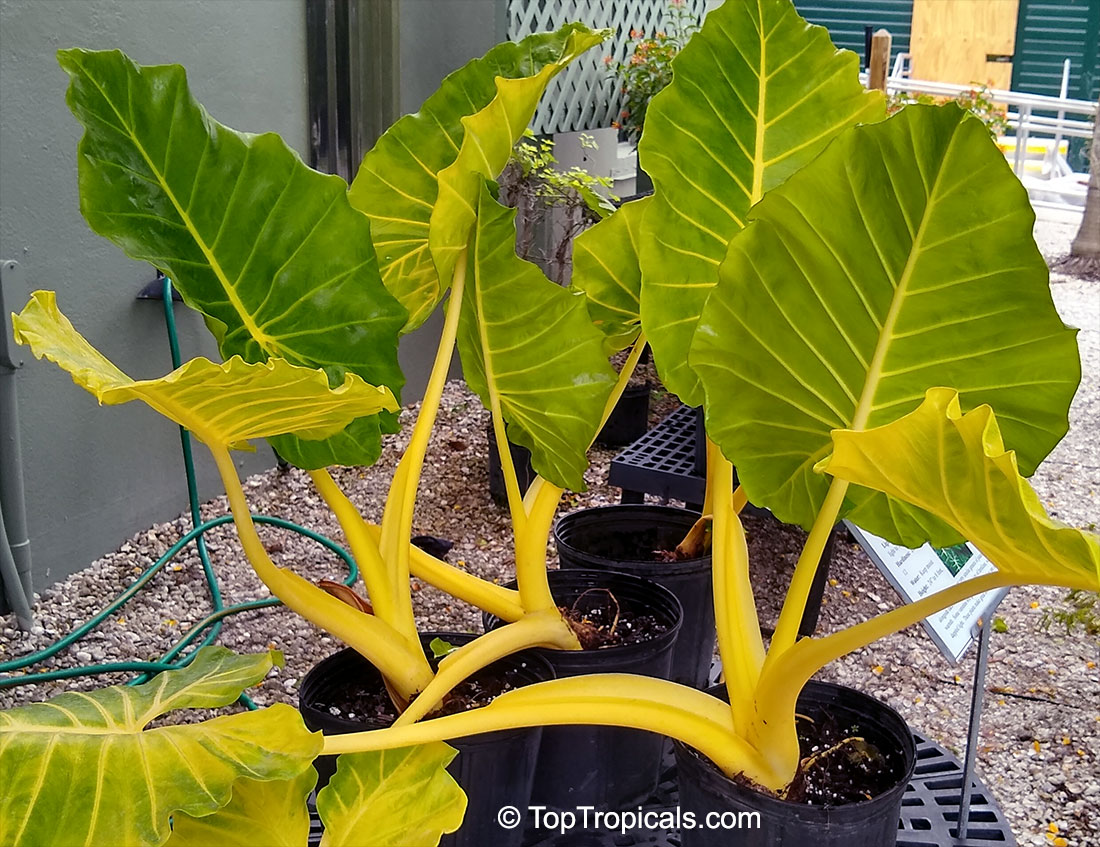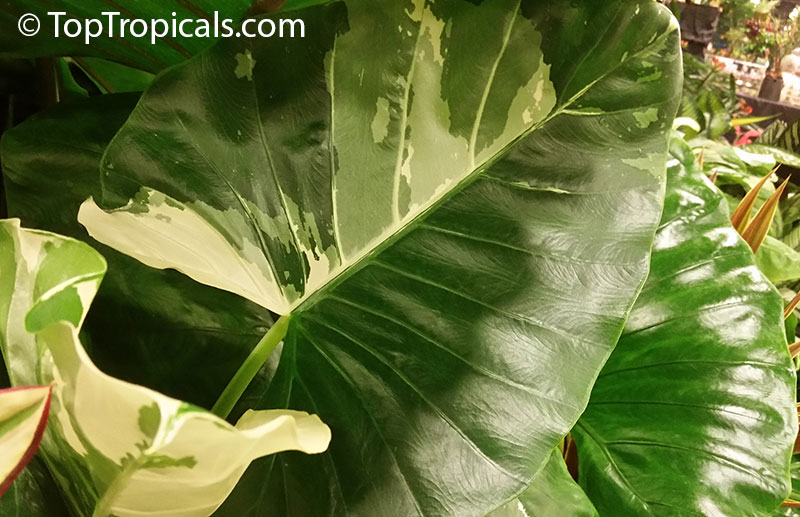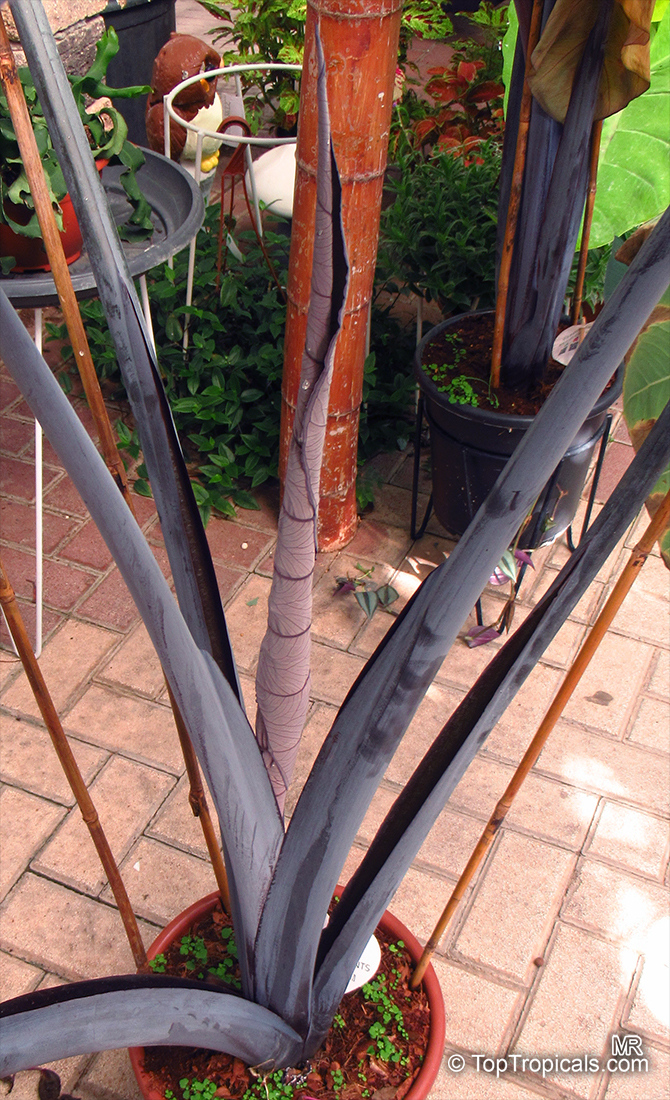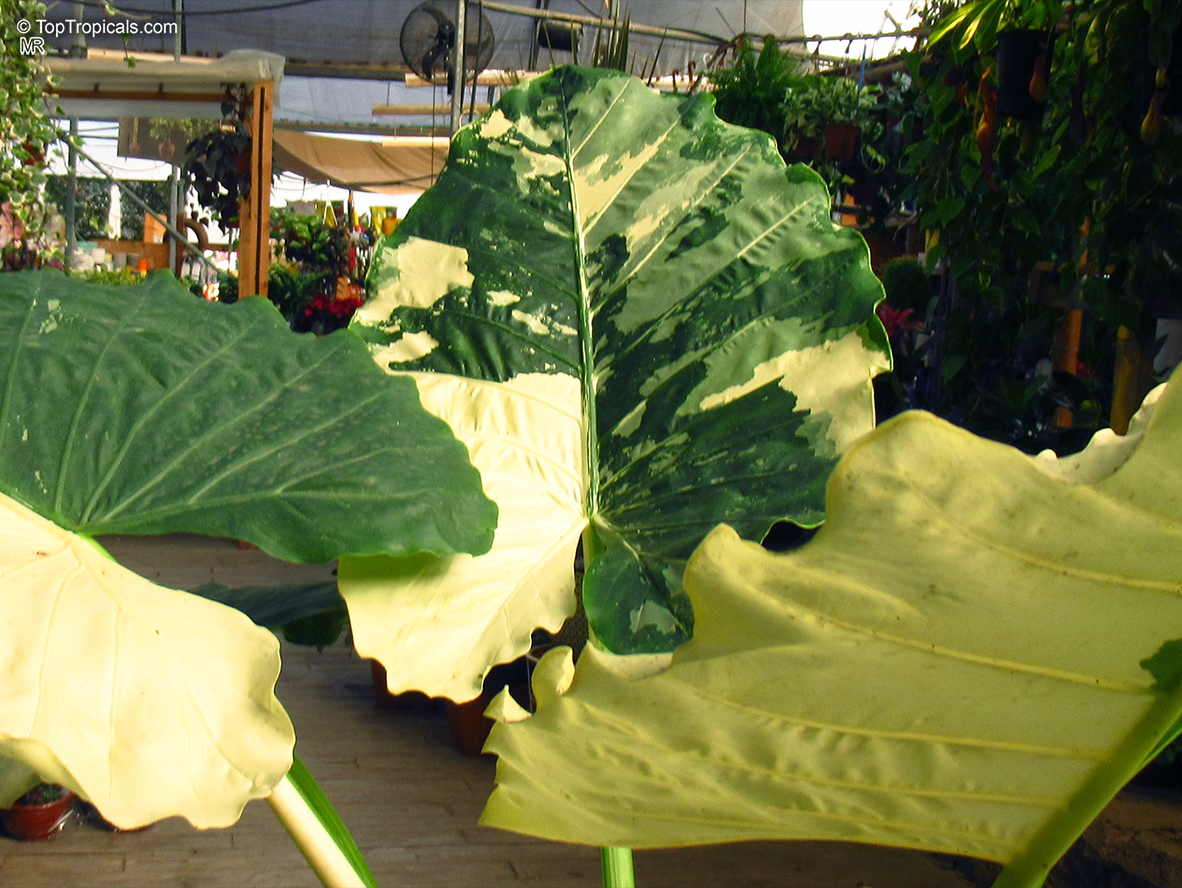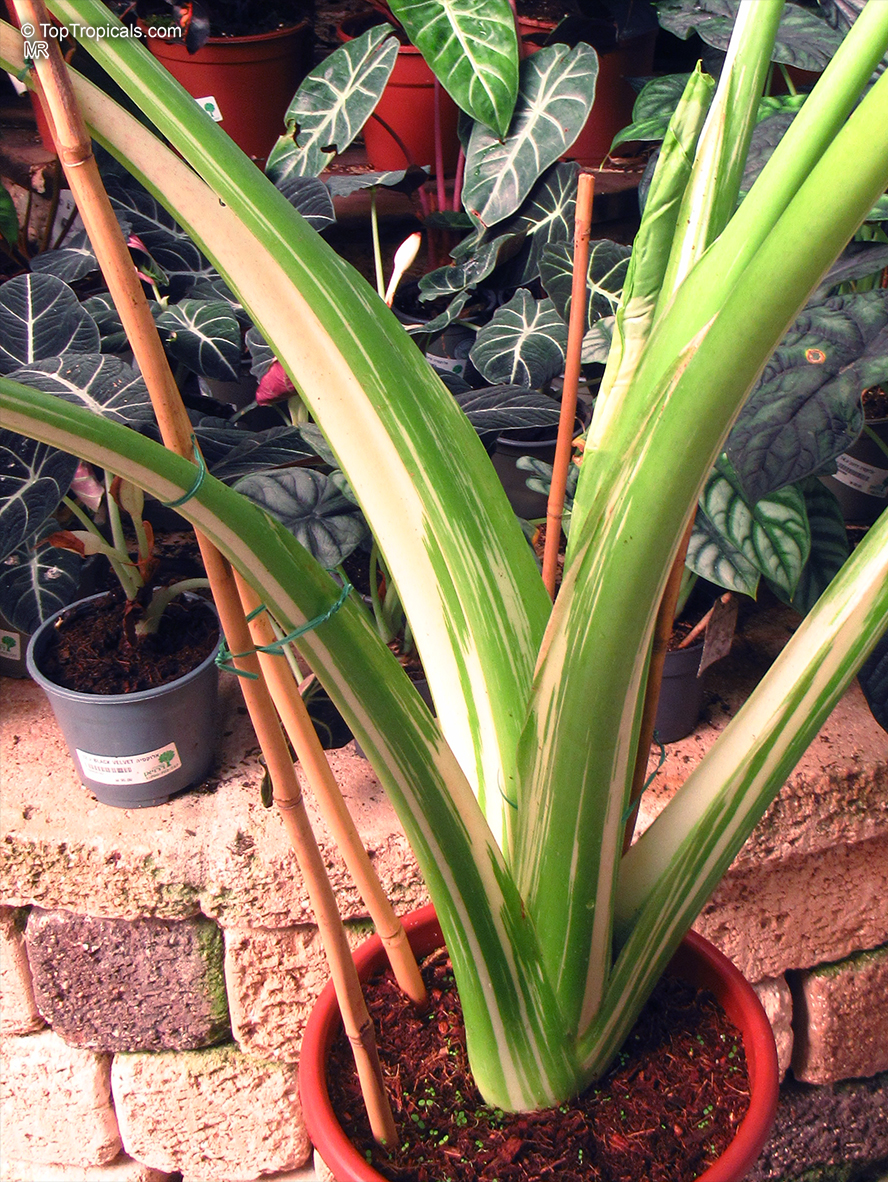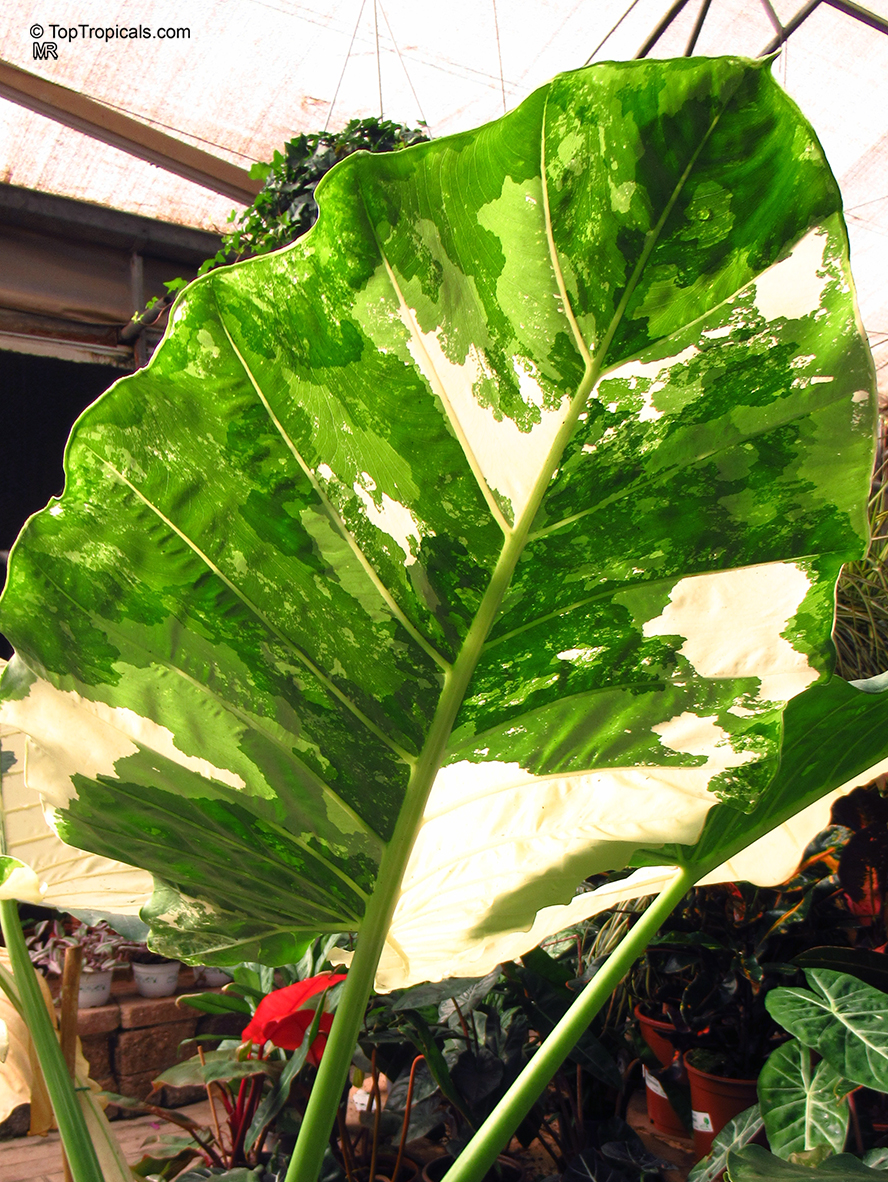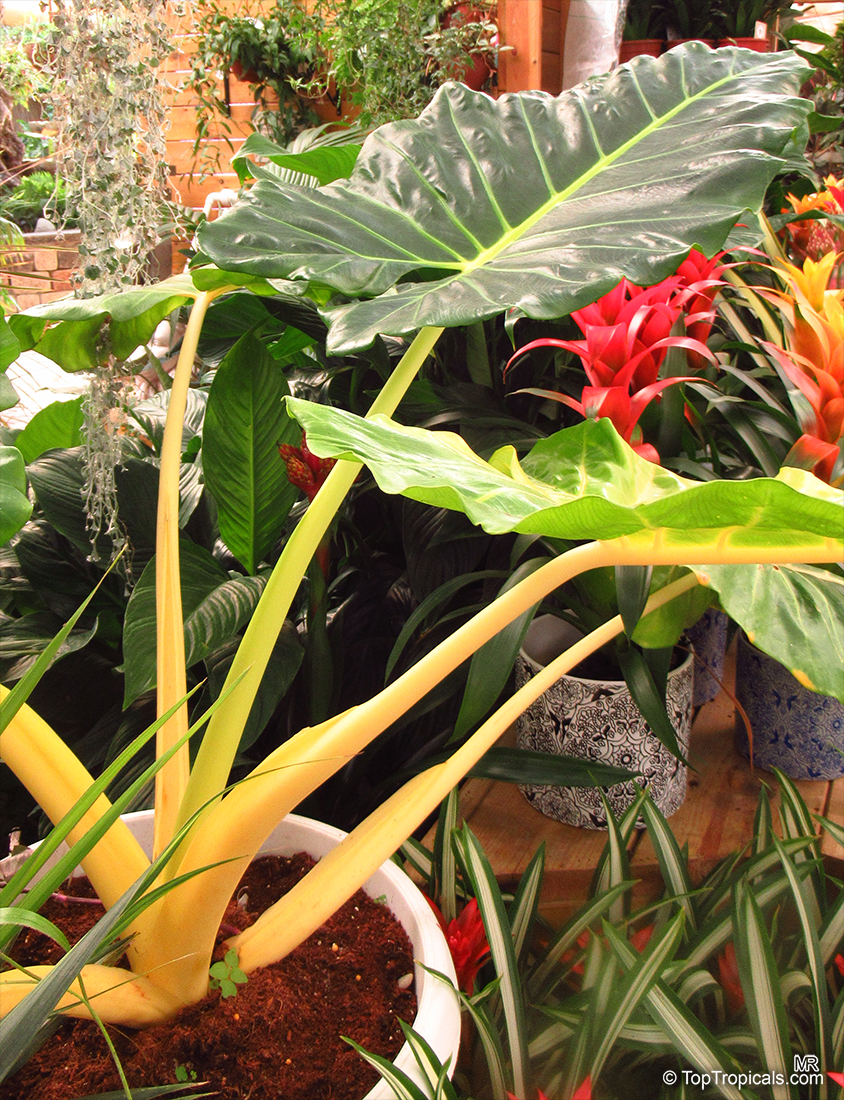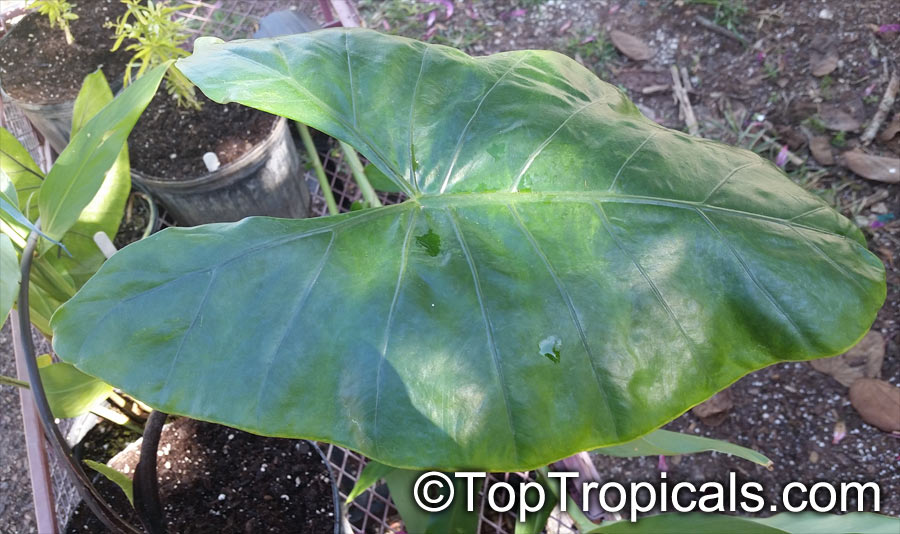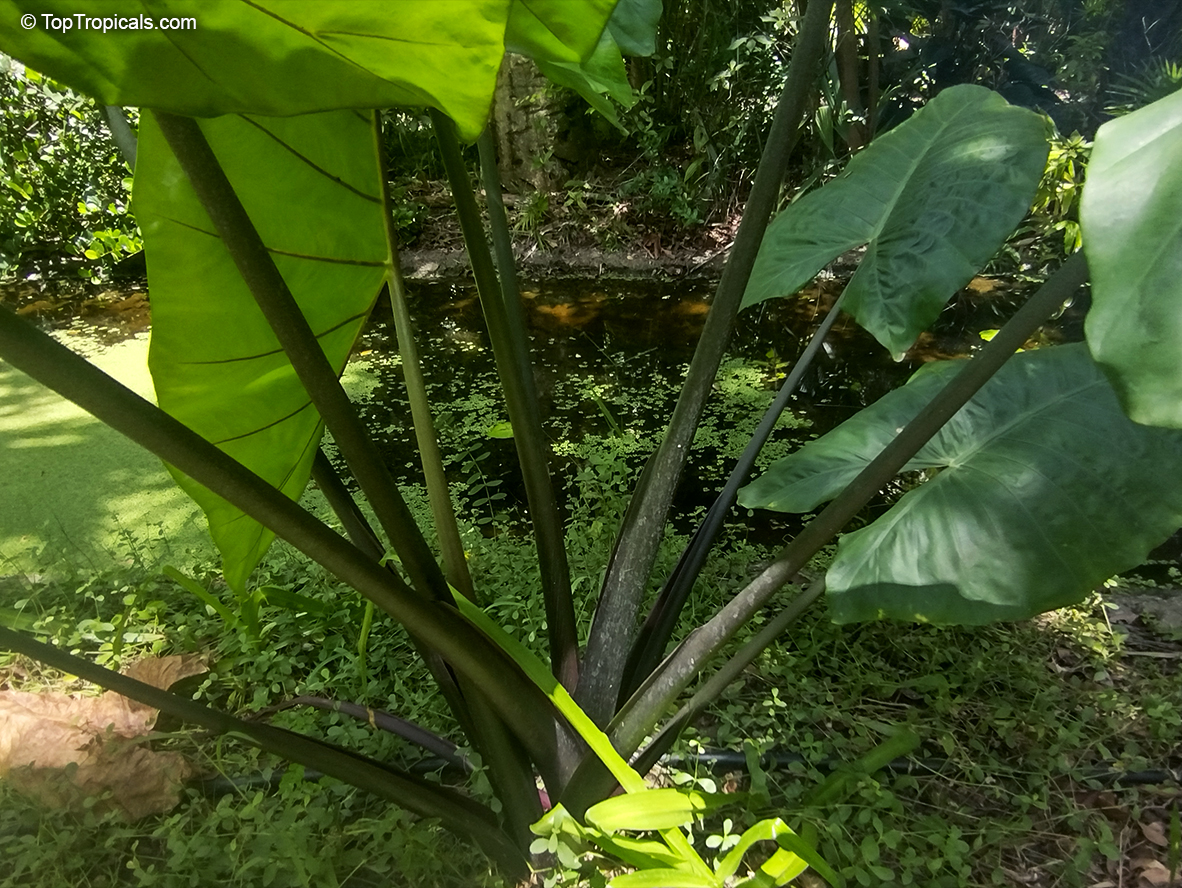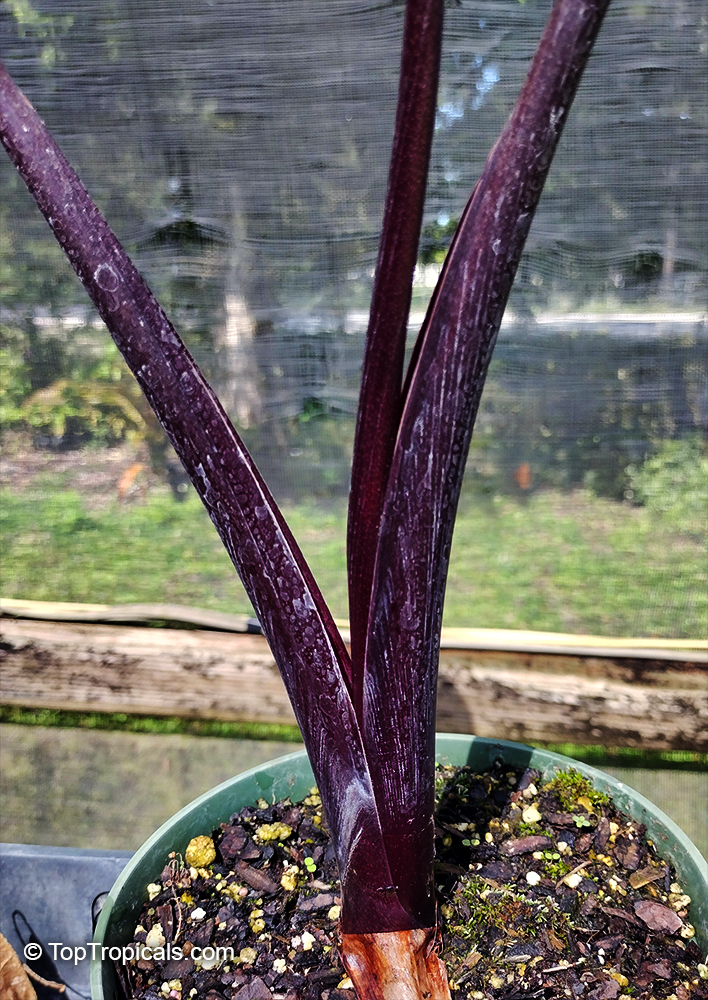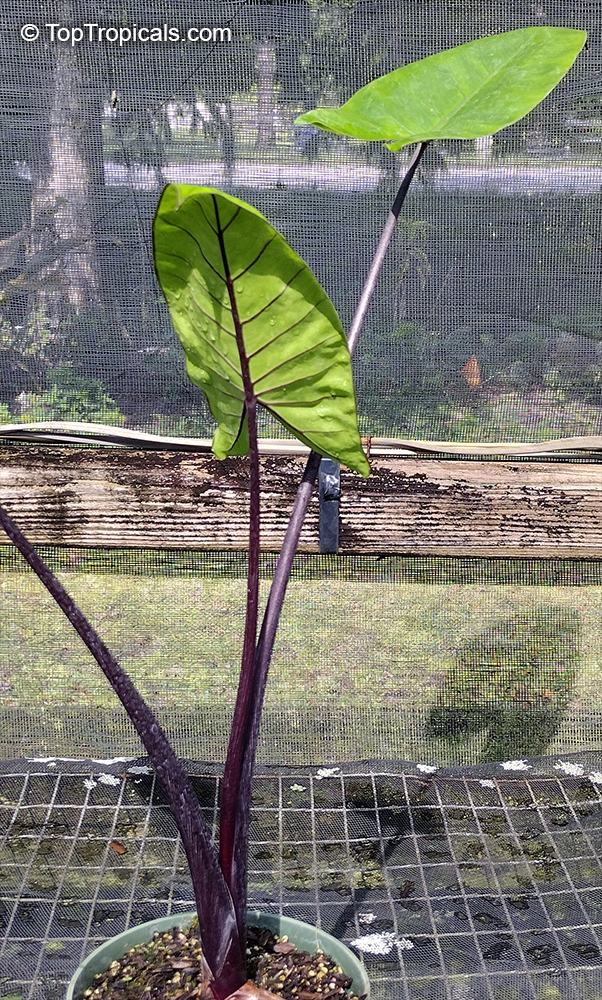Alocasia macrorrhizos (Giant Taro)
Top Tropicals Plant Encyclopedia
Botanical name: Alocasia macrorrhizos
Common names: Giant Taro, Giant Elephant Ear, Upright Elephant Ear
Family: Araceae
Origin: Tropical Asia










Alocasia macrorrhizos is similar to other large-leafed arums such as the Xanthosoma sagittifolium, Peltrandra spp., and Colocasia esculenta, often called Taro. Alocasia macrorrhiza differs from the others in having an upright stem and holding its leaves upright, and in several technical characteristics that mean a lot to the botanists. Numerous hybrids have been produced from among the various Elephant Ear species, and it's not always possible to identify particular specimens.
It produced insignificant but fragrant white flowers on a sradix enclosed in a leaf-like, yellow-green spathe.
Giant taro is cultivated throughout the tropics for its edible rhizomes and shoots.
Alocasias require continual warmth and humidity. The soil should be rich but well drained, and the plant appreciates frequent watering (daily in hot weather), especially as if grows larger. Note however, that when the plant is young and small, too much water (particularly if the weather is cold) will rot the tuber, so be careful not to overdo it.
Bright light is preferred, but it will do well in anything up to 80 percent shade. Leaves tend to grow larger in shadier positions. Full sun is usually not preferred and may discolor the leaves, although it will usually cope with a bit of full sun provided it can get enough water.
Similar plants: Alocasia macrorrhizos (Giant Taro)
- Alocasia baginda (Alocasia Dragon Scale)
- Alocasia clypeolata (Green Shield Alocasia)
- Alocasia cucullata (Lucky Leaf)
- Alocasia cuprea (Mirror Plant)
- Alocasia lauterbachiana (Alocasia)
- Alocasia odora (Giant Upright Elephant Ear)
- Alocasia reginula ''Black Velvet'' (Dwarf Alocasia)
- Alocasia sanderiana (Kris plant)
- Alocasia scalprum (Samar Lance)
- Alocasia sp. (Alocasia)
Recommended Fertilizer: SUNSHINE Robusta - Rapid Growth Booster
Recommended Fertilizer: SUNSHINE Robusta - Rapid Growth Booster
Last one
Recommended Fertilizer: SUNSHINE Robusta - Rapid Growth Booster
